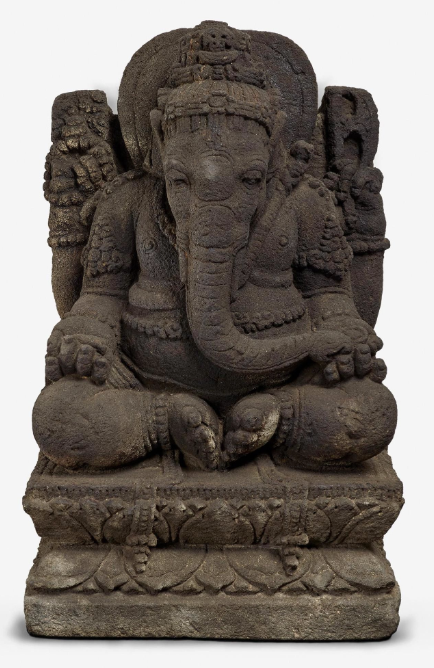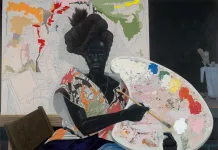
In Ancient India: living traditions, the British Museum presents an exhibition both ambitious in scope and intimate in feeling — a rare balance for a show that spans two millennia and three world religions. Bringing together over 180 objects from across India and beyond, it traces the evolution of Hinduism, Buddhism and Jainism through the devotional art that shaped their histories and continues to animate their living practices today.
The exhibition’s power lies in its coherence. The curators trace a remarkable arc from the earliest symbolic forms — the footprints of the Buddha, the wheel of dharma, the lotus — to the strikingly human depictions that emerged between 200 BC and AD 600. These transformations are not presented as discrete stylistic shifts, but as part of a shared spiritual and artistic vocabulary that developed in the cosmopolitan workshops of ancient cities like Mathura.
The opening gallery sets the tone with a 1,000-year-old statue of Ganesha, whose traces of hot pink pigment still whisper of ritual devotion. It’s this living quality — the recognition that these objects were never static artefacts but active participants in spiritual life — that gives Ancient India its heart.
The exhibition’s collaborative approach deserves equal praise. Developed with practising Buddhists, Hindus and Jains, the curation reflects a conscious respect for faith and context. Even the choice of sustainable, vegan materials for the displays and shop speaks to a sensitivity often absent from museum exhibitions of sacred art.
Ultimately, Ancient India: living traditions is not a nostalgic look backward, but a meditation on continuity — on how ancient practices shape the present, and how a modern museum can honour living faiths. It’s a show of quiet reverence and intellectual generosity, reminding us that sacred art, even behind glass, still breathes.
On until 19th October, get your tickets here: https://www.britishmuseum.org/exhibitions/ancient-india-living-traditions
WRITTEN BY: NURA AROOJ















